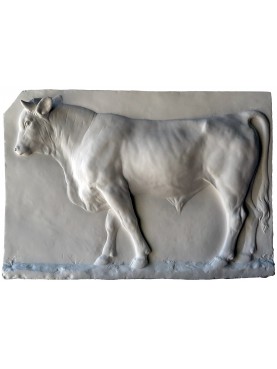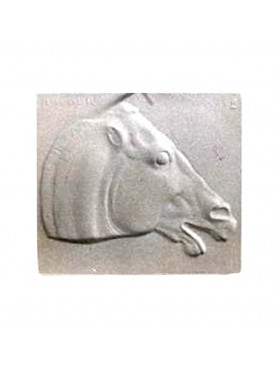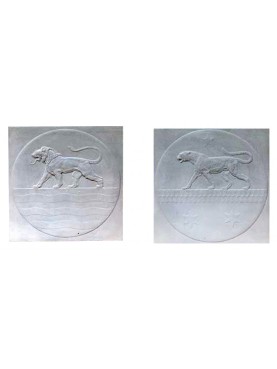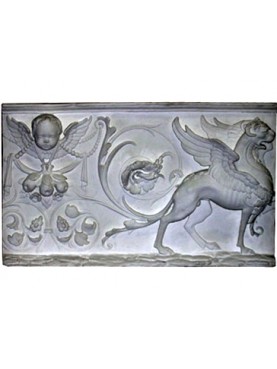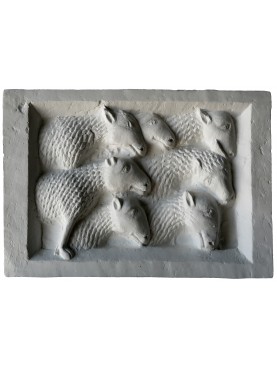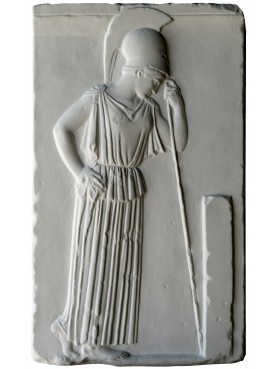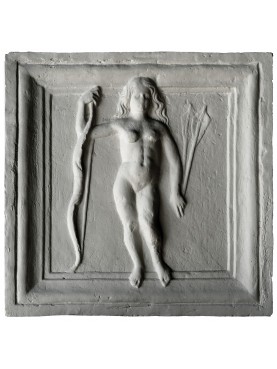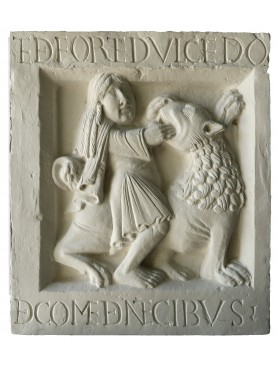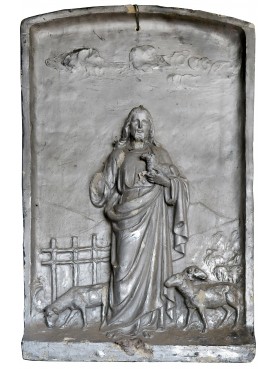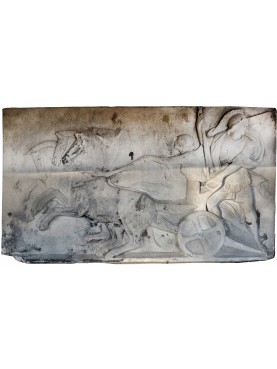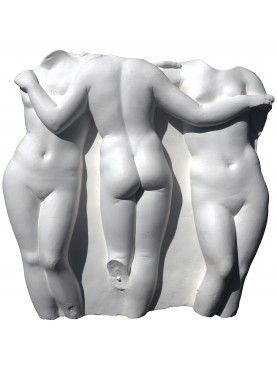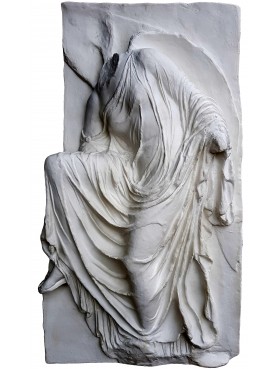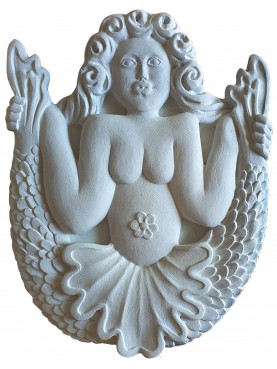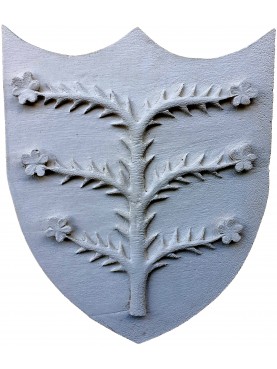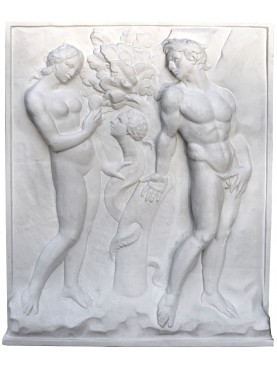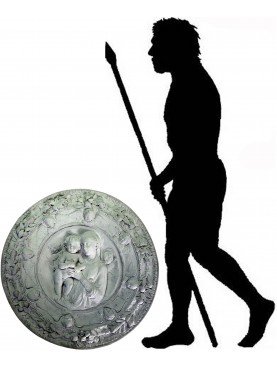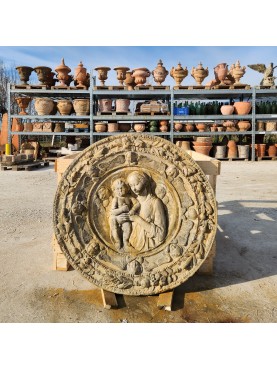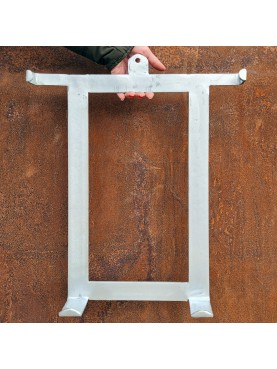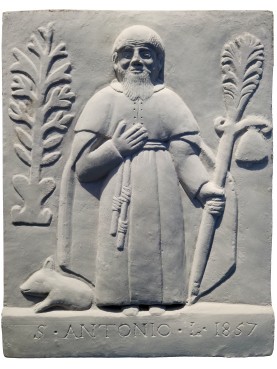Metope of the Parthenon of Athens in plaster - North Frieze Block 46
Metope of the Parthenon of Athens in plaster - North Frieze Block 46
7401
New
Bas-relief in expertly patinated plaster; also available in unpatinated white plaster.
1:1 reproduction of the metope of the Parthenon in Athens, North Frieze Block 10.
The four horsemen gallop in a tight formation, each one overlapping with the other. The first two are dressed in short chiton, chlamys and embades, whereas only the third’s head and shoulder can be seen. The fourth rider dressed in chiton and chlamys and with his petasos on his back, turns his head backwards while he holds the reins with one hand and pets his horse on the mane with the other. Over the horse’s hind quarters the foot of the rider depicted on the following Block XLVII can be made out.
This bas-relief can be produced in white Carrara marble on request.
Data sheet
| Height | 43.31 in | 110 cm |
| Width | 55.91 in | 142 cm |
| Thickness | 5.91 in | 15 cm |
| Weight | 66.14 lbs | 30 Kg |
| Manufacturing | Made in Italy | |
| Material | Plaster | |
| Museum where the Original is exhibited | Museo dell'Acropoli Atene / Athens | |
| Note 01 | 1:1 reproduction as the original |
More info
The Metopes of the Parthenon are a series of marble panels, originally 92 in number, on the outside walls of the Parthenon in Athens, Greece, forming part of the Doric frieze. The metopes of each side of the building (14 each on the eastern and western walls, 32 each on the northern and southern walls) had a different subject, and together with the pediments, Ionic frieze, and the statue of Athena Parthenos contained within the Parthenon, formed an elaborate program of sculptural decoration. Fifteen of the metopes from the south wall were removed and are now part of the Parthenon Marbles in the British Museum, and others have been destroyed. They are famous examples of the Classical Greek high-relief.
The frieze on the north side of the Parthenon depicts part of the procession formed by the people of Athens during the Panathenaic festival in honour of the protectress of the city, Athena. The procession's destination was the Temple of Athena Polias on the Acropolis. Its purpose was the transportation of the Panathenaic peplos destined to adorn the age-old xoanon of the goddess and the offer of a grand sacrifice of animals at the Great Altar outside of the temple.
On the north frieze the procession moves along the Panathenaic Way. On its head are youths that lead young cows and rams for the sacrifice followed by more young men who carry water and offerings. Behind them come musicians with flutes and guitars, elders, perhaps officials, holding olive branches, eleven chariots that participate in an equestrian event and finally sixty horsemen divided in ten groups.












